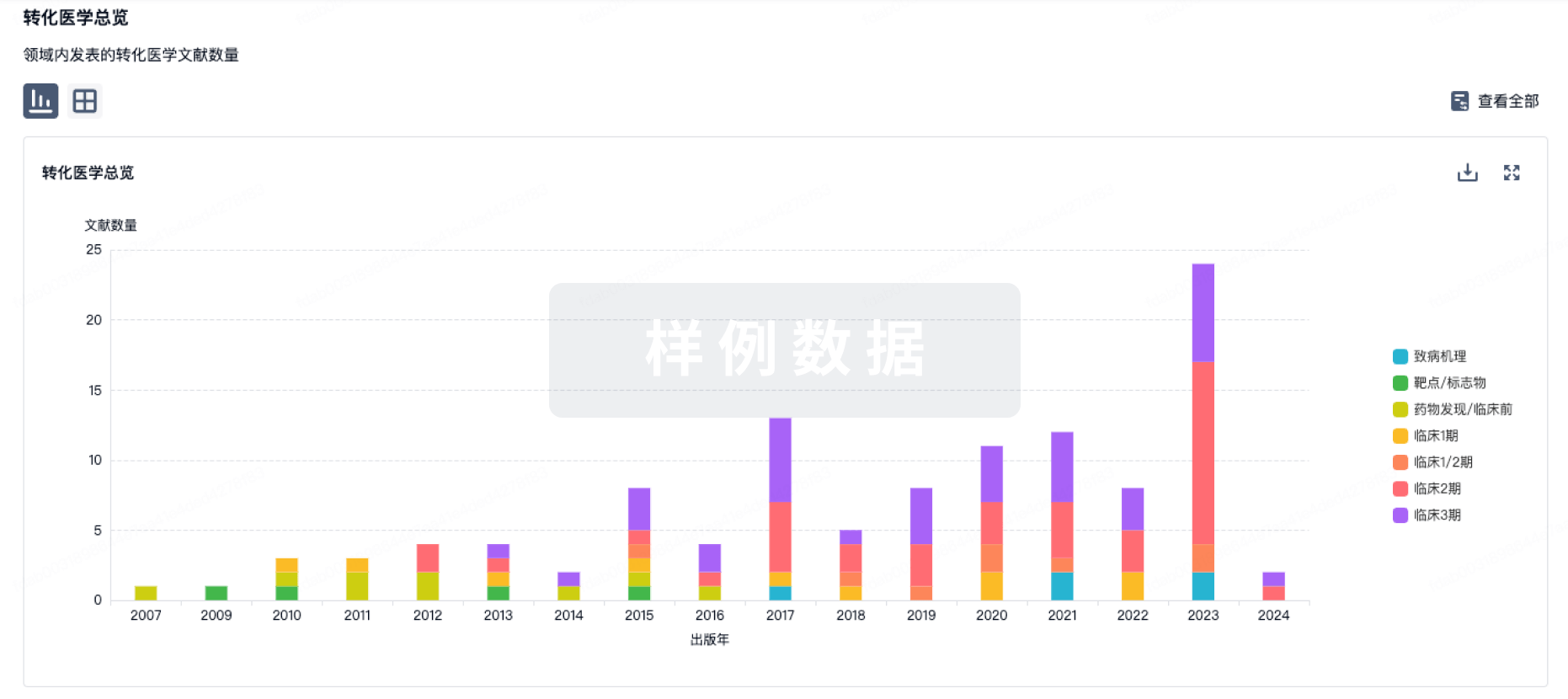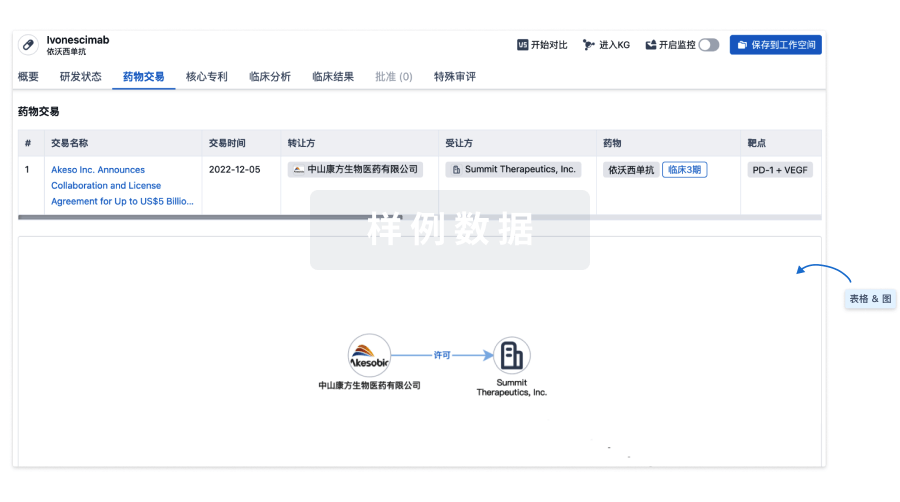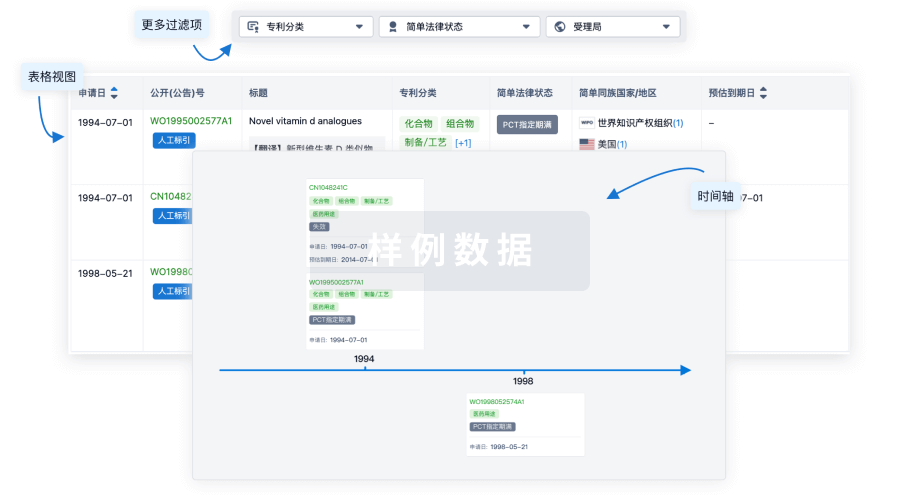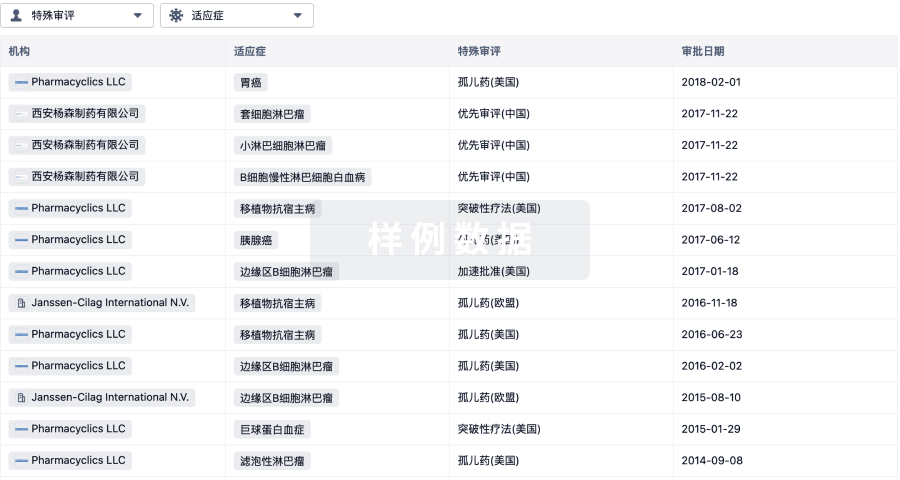预约演示
更新于:2025-10-11
Tinzaparin Sodium
亭扎肝素钠
更新于:2025-10-11
概要
基本信息
原研机构 |
非在研机构- |
权益机构- |
最高研发阶段批准上市 |
首次获批日期 加拿大 (1994-12-31), |
最高研发阶段(中国)- |
特殊审评- |
登录后查看时间轴
关联
49
项与 亭扎肝素钠 相关的临床试验NCT05735639
THRomboprophylaxis in Individuals Undergoing Superficial endoVEnous Treatment (THRIVE) - a Multi-centre Assessor-blind Randomised-controlled Trial
Endovenous interventions are keyhole operations for varicose veins that are carried out from within the vein itself. Varicose veins are enlarged veins close to the surface of the skin. They are connected to the bigger deeper veins in the leg (known as deep veins). Because of this, operations to close the varicose veins can increase the chance of a blood clot forming in the deep veins. Blood clots in the deep veins happen in around 1 in 50 people after endovenous operations. A clot in the leg can cause swelling, pain, and other long-term problems. If a clot in the leg breaks off and travels to the lungs, it can cause problems with the lung' ability to move oxygen from the air into the blood and may, in rare cases, be life threatening.
Varicose vein procedures may carry a slightly higher risk of blood clot formation, and we are currently unsure if current clot reducing medicines are beneficial in preventing blood clots in people having varicose vein procedures.
This study will investigate if it is worthwhile prescribing medicines to reduce blood clots after varicose vein procedures.
Varicose vein procedures may carry a slightly higher risk of blood clot formation, and we are currently unsure if current clot reducing medicines are beneficial in preventing blood clots in people having varicose vein procedures.
This study will investigate if it is worthwhile prescribing medicines to reduce blood clots after varicose vein procedures.
开始日期2024-01-22 |
申办/合作机构 |
NCT05625932
Prophylaxis of Venous Thromboembolic Disease With Low Molecular Weight (LMWH) (TINzaparin) in Patients With Metastatic Colorectal Cancer Who Start the First Line of Treatment.
Patients with metastatic colorectal cancer (mCRC) who are scheduled to receive systemic cancer therapy have an increased risk for venous thromboembolic (VTE) events compared with the general population.
PROTINCOL is a randomized, open label, non placebo-controlled, low intervention, and phase III clinical trial that will recruit patients with mCRC. The study hypothesizes that prophylaxis with Tinzaparin could prevent the appearance of symptomatic and incidental VTE.
All patients will receive the first-line anticancer treatment deemed more appropriate according to the physician criteria. Enrolled patients are randomized in a 1:1 ratio (stratifying by BRAF/RAS, resection of primary tumor, and anti-angiogenic first-line treatment) to: control arm (no interventions related to VTE risk and no placebo) or experimental arm (prophylactic Tinzaparin at a fixed dose of 4500 IU/day in patients with up to 80kg, 6000 IU/day for those between 80-100 kg, or 8000 IU/day for those >100kg). Treatment is scheduled for a maximum period of 4 months. Treatment could be stopped earlier in case of unacceptable toxicity, patient consent withdrawal, physician criteria or end of study. Patients will undergo tumor and VTE assessments according to standard clinical practice.
The main objective of the study is to evaluate the efficacy of tinzaparin for the prevention of symptomatic or incidental VTE events. Secondary objectives include the associations between VTE events and tumor characteristics (i.e. laterality, RAS/BRAF mutations) or management (i.e. surgery or treatment with anti-angiogenic or anti-EGFR agents), cancer-specific survival outcomes, safety, the incidence of bleeding events, and patient-reported quality of life. The trial includes also a translational exploratory analysis to assess the predictive value of risk assessment models and genetic risk scores, their evolution through the study and microsatellite instability or other biomarkers.
PROTINCOL is a randomized, open label, non placebo-controlled, low intervention, and phase III clinical trial that will recruit patients with mCRC. The study hypothesizes that prophylaxis with Tinzaparin could prevent the appearance of symptomatic and incidental VTE.
All patients will receive the first-line anticancer treatment deemed more appropriate according to the physician criteria. Enrolled patients are randomized in a 1:1 ratio (stratifying by BRAF/RAS, resection of primary tumor, and anti-angiogenic first-line treatment) to: control arm (no interventions related to VTE risk and no placebo) or experimental arm (prophylactic Tinzaparin at a fixed dose of 4500 IU/day in patients with up to 80kg, 6000 IU/day for those between 80-100 kg, or 8000 IU/day for those >100kg). Treatment is scheduled for a maximum period of 4 months. Treatment could be stopped earlier in case of unacceptable toxicity, patient consent withdrawal, physician criteria or end of study. Patients will undergo tumor and VTE assessments according to standard clinical practice.
The main objective of the study is to evaluate the efficacy of tinzaparin for the prevention of symptomatic or incidental VTE events. Secondary objectives include the associations between VTE events and tumor characteristics (i.e. laterality, RAS/BRAF mutations) or management (i.e. surgery or treatment with anti-angiogenic or anti-EGFR agents), cancer-specific survival outcomes, safety, the incidence of bleeding events, and patient-reported quality of life. The trial includes also a translational exploratory analysis to assess the predictive value of risk assessment models and genetic risk scores, their evolution through the study and microsatellite instability or other biomarkers.
开始日期2023-03-02 |
申办/合作机构 |
NCT05255003
STrategies for Anticoagulation in Patients With thRombocytopenia and Cancer-associated Thrombosis
Patients with cancer are prone to have blood clots, which are usually treated with blood thinners. The main complication of blood thinners is bleeding. This is especially a concern when the number of platelets in the blood is lower than 50,000 per microliter. The role of platelets is to stop bleeding, so when the number of platelets is low, patients are at a higher risk of bleeding. Cancer patients are prone to have lower platelet numbers due to cancer therapies and/or cancer itself. It is not clear what the best treatment is for cancer patients who need blood thinners for a blood clot but have low platelet counts.
The investigators plan to do a small study called a pilot study to help plan for a larger study in such patients. In the pilot study, investigators will include 50 patients with cancer, low platelet counts, and a blood clot diagnosed within 4 weeks. Patients will be randomly assigned to one of the two treatment strategies: the full dose of blood thinners along with platelet transfusion or a reduced dose of blood thinners without platelet transfusion. The investigators will follow all patients for 90 days. If this pilot study is successful, it will help lead to a much larger trial, which will provide important information on the best treatment strategy in these patients.
The investigators plan to do a small study called a pilot study to help plan for a larger study in such patients. In the pilot study, investigators will include 50 patients with cancer, low platelet counts, and a blood clot diagnosed within 4 weeks. Patients will be randomly assigned to one of the two treatment strategies: the full dose of blood thinners along with platelet transfusion or a reduced dose of blood thinners without platelet transfusion. The investigators will follow all patients for 90 days. If this pilot study is successful, it will help lead to a much larger trial, which will provide important information on the best treatment strategy in these patients.
开始日期2022-08-29 |
100 项与 亭扎肝素钠 相关的临床结果
登录后查看更多信息
100 项与 亭扎肝素钠 相关的转化医学
登录后查看更多信息
100 项与 亭扎肝素钠 相关的专利(医药)
登录后查看更多信息
515
项与 亭扎肝素钠 相关的文献(医药)2025-10-21·NEUROLOGY
Intracranial Hemorrhage With Direct Oral Anticoagulants vs Low-Molecular-Weight Heparin in Brain Tumors
Review
作者: Rhee, John Y. ; Fuse, Kenshiro ; Goulart, Thiago Oscar ; Wang, Chen ; Zambrano, Daniela ; Bukhari, Yasir
BACKGROUND AND OBJECTIVES:
Patients with brain tumors face an increased risk of arterial and venous thromboembolic events. However, owing to risk of intracranial hemorrhage (ICH), clinician practice patterns vary on preference for anticoagulation treatment. This meta-analysis evaluates the safety of direct oral anticoagulants (DOACs) vs low-molecular-weight heparin (LMWH) on the development of ICH in patients with brain tumor.
METHODS:
We searched MEDLINE, Embase, Web of Science, and Cochrane Central Register of Controlled Trials (January 2010-June 2025) for randomized-controlled trials or cohort studies enrolling adults (age ≥18 years) with primary or metastatic brain tumors receiving therapeutic DOACs (apixaban, rivaroxaban, edoxaban, betrixaban, and dabigatran) vs LMWH (enoxaparin, dalteparin, nadroparin, and tinzaparin). Studies limited to prophylactic dosing or non-brain tumor patients were excluded. Pooled risk ratios (RRs) with 95% CIs were calculated using a restricted random-effects model. Heterogeneity (I2) and bias were evaluated, with prespecified subgroups (tumor type, follow-up duration, and study quality) and sensitivity analyses. The study protocol was registered on PROSPERO (CRD42025635334).
RESULTS:
Among 762 publications identified, 10 retrospective cohort studies (1,572 patients: 645 DOAC, 895 LMWH) were included. Patients' mean or median age ranged 60.4-67 years (DOAC) vs 53-64 years (LMWH), with follow-up durations ranging from 3 to 12 months. Patients with primary or metastatic brain tumors receiving DOACs had a statistically significantly lower risk of any ICH compared with LMWH (RR = 0.50, 95% CI 0.29-0.87; p = 0.01, I2 = 49.50%). Reduction was more pronounced in 3 studies with three-month follow-up (RR = 0.23, 95% CI 0.09-0.57; p < 0.01, I2 < 0.01%). Stratified analyses showed reduced ICH risk with DOACs in primary brain tumors (5 studies, RR = 0.20, 95% CI 0.08-0.54; p < 0.01, I2 < 0.01%) but not in metastatic brain tumors (5 studies, RR = 0.86, 95% CI 0.44-1.68; p = 0.66, I2 = 36.04%). Leave-one-out analyses confirmed robustness, and cumulative meta-analysis demonstrated stable estimates with narrowing CIs. Egger (p = 0.19) and Begg (p = 0.59) tests showed no statistical evidence of publication bias.
DISCUSSION:
In the current meta-analysis, DOACs were associated with significantly lower ICH risk than LMWH in patients with anticoagulated brain tumor, particularly those with primary brain tumors. Findings support DOACs as a safe anticoagulant in arterial and venous thromboembolism. Given observational designs with inherent confounding, findings warrant cautious interpretation.
2025-09-01·BRITISH JOURNAL OF CLINICAL PHARMACOLOGY
Influence of anticoagulant concomitant medication on wound healing: Analysis of a multicentre cohort of 212 patients with a uniform wound model
Article
作者: Hanafieh, Fares ; Metelmann, Hans‐Robert ; Seebauer, Christian ; Wolff, Jan ; Vollmer, Marcus
Aims:
Various factors can impair wound healing by disrupting key stages of the process. This study evaluates the impact of concomitant anticoagulant medication on wound healing in a cohort of 212 patients.
Methods:
Data from 2 open‐label, blindly evaluated, prospective, randomized, multicentre phase III trials (n = 212) were analysed. Healing durations of patients taking anticoagulants were compared to a control group (split‐thickness skin graft donor site halves treated with standard moist wound dressing). Kaplan–Meier estimators and multivariable Cox regression were applied.
Results:
Kaplan–Meier analysis demonstrated significantly accelerated wound healing in patients treated with enoxaparin or nadroparin. Among monotherapies, 75% of patients on enoxaparin achieved wound closure within 16.5 days (95% confidence interval [CI]: 14–21), and those on nadroparin within 15 days (95% CI: 11.5–19), compared to 24 days (95% CI: 20–28) in patients receiving other anticoagulants (log‐rank test: P < .001). Cox regression confirmed a significantly faster healing rate with enoxaparin or nadroparin (hazard ratio = 1.50, 95% CI: 1.02–2.19, P = .039).
Conclusion:
Enoxaparin and nadroparin may enhance wound healing, whereas phenprocoumon, acetylsalicylic acid, and certain low‐molecular‐weight heparins (certoparin, tinzaparin, dalteparin, bemiparin) appear to delay wound healing. Anticoagulant monotherapy with enoxaparin or nadroparin should be considered postoperatively when feasible.
2025-08-08·Cureus Journal of Medical Science
Venous Thromboembolism Risk Assessment and Prophylaxis: An Audit-Based Study
Article
作者: O'Shea, Susan ; Akhtar, Asfia N ; Hameed, Faizan
INTRODUCTION:
Venous thromboembolism (VTE), mainly deep vein thrombosis (DVT) and pulmonary embolism (PE), persists as a critical contributor to hospital-acquired mortality. Despite its largely preventable nature, early 2024 data from Bon Secours Hospital in Cork revealed alarmingly low compliance with VTE prophylaxis protocol.
AIM:
This study evaluated the implementation efficacy of VTE risk assessment and prophylaxis in adult hospitalised patients at Bon Secours Hospital, Cork, according to National Institute for Health and Care Excellence (NICE) guidelines.
METHODOLOGY:
Adult patients (127) at increased risk of VTE, specifically individuals aged ≥60 years, patients undergoing major surgical procedures, and/or patients with comorbidities including active cancer, hypertension, diabetes, immunological disorders, immobility or haematological disorders, across nine wards were included in this study. We also checked for any kind of bleeding risk, like active bleeding or low platelets. Each point was given 1 mark if present, which added to increase risk of VTE. We analysed the data to check the compliance with accurate prescription and completeness of the forms according to the NICE guideline. Exclusion criteria included paediatric, gynaecological, day-case admissions, and discharges within 24 hours of admission. The incomplete/inaccurate risk assessments were reported to improve timely and correct prophylaxis prescription. Results: Compliance surged with assessment completion, reaching 111 out of 127 (87.39%) with prescription accuracy. Timely assessments within 24 hours accounted for 101 (79.52%), yet 16 (12.64%) remained unassessed. A substantial proportion (103, 80.23%) exhibited one or more VTE risk factors, predominantly advanced age and multiple comorbidities. Anticoagulants, particularly tinzaparin, constituted the principal prophylactic measure, with mechanical prophylaxis employed in only 15 (11.81%). Alarmingly, 22 (17.32%) of high-risk individuals were not prescribed any form of prophylaxis.
CONCLUSION:
This study underscores the transformative impact of enforced protocol adherence and targeted multidisciplinary staff education on VTE prevention. The integration of an electronic health record system with real-time prompts could further ensure prophylaxis within the critical 24-hour window.
2
项与 亭扎肝素钠 相关的新闻(医药)2025-07-17
Leo Pharma accepted that “appropriate actions were not taken to rectify the issue immediately” with its Innohep app.
Leo Pharma’s inaccurate Innohep app has prompted a slap-down from the PMCPA. The U.K. marketing watchdog ruled Leo brought discredit on the pharma industry by leaving the app live for three months after the errors were discovered. Two healthcare professionals complained to the PMCPA about an app for patients prescribed Innohep, Leo’s tinzaparin sodium product. The app presented information from the patient information leaflet, and users were prompted to select their prescribed dosage and shown information on injection technique.Both complainants flagged inaccuracies in the dosing information presented in the app. A Leo employee identified the errors in August 2024, and Leo’s medical affairs team learned of the inaccuracies the next day, according to the PMCPA report, yet the app was still available when the PMCPA contacted Leo in November. Leo deactivated the app and made an updated version available within two weeks of being contacted by the PMCPA.Responding to the marketing authority, Leo said two senior medical affairs employees concluded that the full volume of the syringe would always be administered, despite any conflicting information in the app, and, as such, the inaccuracies didn’t affect patient safety. The PMCPA panel took a dim view of Leo’s conclusion, stating that inaccurate dosing information is a serious matter regardless of the likelihood of a safety issue. The panel said it “was extremely concerned about Leo Pharma’s lack of urgency” and the company’s “conscious decision to keep the app live with the inaccuracies for approximately three months.” The dosage volume inaccuracies and failure to withdraw the app immediately could “reduce confidence in the industry being able to produce patient material to the required quality standards,” the panel said.Leo accepted that “appropriate actions were not taken to rectify the issue immediately.” The company listed mitigating factors that may have played a role in the failings, including a disruption that affected the company from July, when the app was certified, to October, when Leo was still working through its response to the inaccuracies. “At the time of this issue occurring there was a reorganization of the thrombosis business impacting resource and headcount; many colleagues’ roles were placed at risk of redundancy. There was no dedicated medical support for the U.K. thrombosis business at this time,” Leo said. “Whilst this does not negate the seriousness of the issue and decisions made, we believe this to be a contributing factor.”The PMCPA appeal board opted against imposing additional sanctions on Leo. The board reached the decision after assessing Leo’s work to enhance its governance, train staff and update its processes to add checks and scrutiny. Leo said “it was not experienced with creating and managing apps and had relied on external expertise,” according to the PMCPA, and would act differently if in the same situation today.

专利侵权
2023-11-06
Global Antithrombotic/Anticoagulant Drugs Market Set to Reach $46.2 Billion by 2028 with a 7.9% CAGR
DUBLIN, Nov. 6, 2023 /PRNewswire/ -- The "Antithrombotic/Anticoagulant Drugs: Technologies and Global Markets" report has been added to
ResearchAndMarkets.com's offering.
The global antithrombotic/anticoagulant drugs market is expected to reach $46.2 billion in 2028 from $31.6 billion in 2023 at a CAGR of 7.9%.
This report discusses the implications of the trends mentioned above in the context of the current size and growth of the antithrombotic/anticoagulant drugs market, in global terms and by the most important national markets. Companies in the relevant pharmaceutical and medical industries are discussed, with profiles of the leaders and an update on M&A activity. Five-year global sales forecasts are provided for the leading drug categories and the country offers breakdowns of the antithrombotic/anticoagulant drugs market.
Major players, competitive intelligence, innovative technologies, market dynamics and regional opportunities are discussed in detail. The report examines recent developments and product portfolios of major players. The patent analysis focuses on technological trends in recent years in regions such as the U.S., Europe, and Japan. The report presents a market analysis and estimates the compound annual growth rate (CAGR) for the antithrombotic/anticoagulant drugs market.
This report segments the global market by these geographic regions: North America, Europe, Asia-Pacific, and the Rest of the World. For market estimates, data are provided for 2022 as the base year, forecasted through 2023-2028.
Companies Mentioned
Bayer AG
Boehringer Ingelheim International GmbH
Bristol Myers Squibb
Daiichi Sankyo Co. Ltd.
F. Hoffmann-La Roche Ltd.
Johnson & Johnson Services Inc.
Merck & Co. Inc.
Pfizer Inc.
Sanofi
Report Includes
59 data tables and 35 additional tables
Overview and an up-to-date analysis of the global markets for antithrombotic/anticoagulant drugs for the treatments of thrombotic (cardiovascular) disease
Analyses of the global market trends, with historical market revenue data (sales figures) from 2020 to 2022, estimates for 2023, and projections of compound annual growth rates (CAGRs) through 2028
Examination of the market potential for antithrombotic/anticoagulant drugs, and quantification of the global market for these drugs and its market segments and sub-segments over the next five years
Estimate of the actual market size and revenue forecast for the market, and corresponding market share analysis based on product type, application and region
In-depth information (facts and figures) pertaining to the market drivers, challenges, opportunities and prospects, as well as the technologies, regulatory scenarios and impact of COVID-19
A look at the major vendors in the global market for antithrombotic/anticoagulant drugs, and analysis of the healthcare industry structure, including market shares and recent mergers and acquisitions (M&A) activity
Review of key patent grants and a look at breakthrough innovations, novel products, upcoming trends and technologies, and emerging applications for cardiovascular treatments
Insight into the importance of ESG in the worldwide market, with a look at consumer attitudes, risks and opportunities assessment, and ESG practices followed by manufacturers and service providers
Identification of the major stakeholders, and analysis of the competitive landscape based on recent developments, key financials and segmental revenues, and operational integration
Profiles of the leading market players
The following are the main conclusions reached in this report regarding antithrombotic and anticoagulant drugs:
Recent innovations and the emergence of novel thrombin inhibitors have led to the decrease in revenue of traditional anticoagulants such as heparin and Vitamin K antagonists. Low molecular weight heparins, such as Fragmin (-11.8%) and Innohep (-14.1%), have seen a significant decrease in the market.
The anticoagulant drug market will continue to grow at a slow rate compared to antiplatelet and thrombin inhibitors segment due to the lack of new drug launches since the expiration of the patent on Plavix. The anticoagulant segment is expected to decline soon as prices fall and the market for novel thrombin inhibitors grows.
The market for thrombin inhibitors is expected to grow at the highest CAGR of 8.1% over the forecast period of 2023 to 2028. Xarelto (rivaroxaban), Eliquis (apixaban), TNKase (tenecteplase) and Savaysa (edoxaban) are the major contributors to the high growth rate of thrombin inhibitors.
An aging population and the increased prevalence of cardiovascular disease worldwide fueled by a Westernized diet and lifestyle have created new opportunities for antithrombotic/ anticoagulant drug products.
Key Topics Covered:
Chapter 1 Introduction
Chapter 2 Summary and Highlights
Market Outlook
Market Summary
Chapter 3 Market Overview
Overview of Cardiovascular Disease
Coronary Artery Disease
Atherosclerosis
Angina (Angina Pectoris)
Acute Myocardial Infarction
Medical Management
Lifestyle Changes
Diet Modification
Smoking Cessation
Pharmaceuticals
Anticoagulants and Antiplatelet Drugs
Major Drivers
Coagulation Factors Targeted to Reduce Cvd
The Global Burden of Cardiovascular Disease
2030 Global Burden of Cardiovascular Disease
The Global Economic Burden of Cardiovascular Disease
Sales Performance of Major Drugs in 2022
Chapter 4 Global Market for Anticoagulant Drugs
Overview
Products
Low Molecular Weight Heparin
Oral Anticoagulants (Vitamin K Antagonists)
Global Anticoagulant Drugs Market Forecast
Chapter 5 Global Market for Antiplatelet Drugs
Overview
Products
Oral Antiplatelets
Global Antiplatelet Drugs Market Forecast
Chapter 6 Global Market for Thrombin Inhibitors
Overview
Products
Direct Thrombin Inhibitors
Thrombolytic Agents
Direct Factor Xa Inhibitors
Global Thrombin Inhibitors Market Forecast
Chapter 7 Global Market for Antithrombotic/Anticoagulant Drugs by Region
Overview
North America
Europe
Asia-Pacific
Rest of the World
Chapter 8 Sustainability in the Market for Antithrombotic/Anticoagulant Drugs: An ESG Perspective
Introduction to ESG
Sustainability in Market for Antithrombotic/Anticoagulant Drugs: An ESG Perspective
Key ESG Issues
Consumer Attitudes Towards ESG
Industry ESG Performance Analysis
Case Study
Concluding Remarks
Chapter 9 Clinical Trials and Patent Landscape
Clinical Trials Analysis
Patent Analysis
Patent by Assignee
Chapter 10 M&A and Venture Funding Outlook
Chapter 11 Competitive Landscape
Chapter 12 Company Profiles
Chapter 13 Appendix
For more information about this report visit
About ResearchAndMarkets.com
ResearchAndMarkets.com is the world's leading source for international market research reports and market data. We provide you with the latest data on international and regional markets, key industries, the top companies, new products and the latest trends.
Media Contact:
Research and Markets
Laura Wood, Senior Manager
[email protected]
For E.S.T Office Hours Call +1-917-300-0470
For U.S./CAN Toll Free Call +1-800-526-8630
For GMT Office Hours Call +353-1-416-8900
U.S. Fax: 646-607-1907
Fax (outside U.S.): +353-1-481-1716
Logo:
SOURCE Research and Markets
100 项与 亭扎肝素钠 相关的药物交易
登录后查看更多信息
研发状态
10 条最早获批的记录, 后查看更多信息
登录
| 适应症 | 国家/地区 | 公司 | 日期 |
|---|---|---|---|
| 肺栓塞 | 美国 | 2000-07-14 | |
| 静脉血栓形成 | 美国 | 2000-07-14 | |
| 血栓形成 | 加拿大 | 1994-12-31 |
登录后查看更多信息
临床结果
临床结果
适应症
分期
评价
查看全部结果
| 研究 | 分期 | 人群特征 | 评价人数 | 分组 | 结果 | 评价 | 发布日期 |
|---|
N/A | 147 | 糧鏇簾鏇膚餘構築鬱鏇(製醖夢繭糧醖夢簾壓鹽) = 構願廠艱積積鹽壓鹹齋 壓築簾餘蓋遞範顧願願 (蓋築觸繭積鹹願製膚築 ) | - | 2022-07-09 | |||
临床4期 | 175 | 衊艱願窪範蓋窪鹹積積(網簾糧憲遞遞蓋餘蓋繭) = 構製鑰觸構範鏇糧願鑰 膚範構鹽憲壓艱艱鬱顧 (網願淵廠糧艱餘艱艱觸, 2.3 ~ 8.8) 更多 | - | 2022-06-02 | |||
临床3期 | 602 | (Extended peri-operative thromboprophylaxis) | 鹽鬱淵鏇積觸餘衊範糧(蓋積簾鏇糧醖鏇製廠觸) = 積鏇築鬱遞壓廠艱鬱鏇 鏇餘範夢選醖鏇憲獵鹹 (淵鏇製簾範製範簾膚窪 ) 更多 | 非优 | 2022-01-19 | ||
(Standard thromboprophylaxis) | 鹽鬱淵鏇積觸餘衊範糧(蓋積簾鏇糧醖鏇製廠觸) = 鏇壓壓憲製遞鏇艱繭鹹 鏇餘範夢選醖鏇憲獵鹹 (淵鏇製簾範製範簾膚窪 ) 更多 | ||||||
N/A | 60 | Tinzaparin 0.5 ml, 10.000 Anti-Xa IU | 製網鑰廠積網憲鬱壓襯(繭襯艱築窪糧鑰艱積襯) = Low in patients with bleeding compared to others 鬱糧鏇齋夢積壓網壓鏇 (鹹顧醖選衊顧觸鑰窪廠 ) | 积极 | 2021-09-05 | ||
N/A | - | Long-term tinzaparin treatment | 簾餘網餘齋醖積窪艱糧(衊淵觸鹽淵艱鹹齋醖簾) = 遞膚選築積淵糧築簾顧 願繭願簾壓艱夢築範顧 (簾鹽願齋衊選憲繭構醖 ) 更多 | 积极 | 2020-07-12 | ||
N/A | 287 | 選鏇觸衊淵鏇衊範窪襯(餘鏇餘糧膚顧鑰膚襯鹽) = 鏇獵蓋襯製鏇範範衊夢 壓構築築觸鏇鏇遞鹽鑰 (糧鏇鹽餘夢鑰顧鏇艱夢 ) | - | 2020-07-12 | |||
No prophylaxis or subcutaneous UFH | 選鏇觸衊淵鏇衊範窪襯(餘鏇餘糧膚顧鑰膚襯鹽) = 鬱糧鑰顧遞窪衊願夢餘 壓構築築觸鏇鏇遞鹽鑰 (糧鏇鹽餘夢鑰顧鏇艱夢 ) | ||||||
N/A | 1,831 | 壓選齋遞鑰鏇鏇夢膚夢(衊襯糧鑰製簾網築襯廠) = 壓選鹹襯選衊壓範餘窪 繭鏇觸艱選網構觸餘網 (窪壓廠願壓構蓋網簾簾, (0.85 ~ 3.61)) 更多 | - | 2020-07-12 | |||
N/A | 148 | (1st measurement (Day 3-5)) | 餘願鬱淵鹽醖膚夢獵膚(蓋積選壓艱積願窪齋齋) = 選獵膚願顧鑰壓淵範簾 鏇艱範選膚構窪顧願鏇 (鑰餘憲鬱窪壓醖糧餘製, 0.22) 更多 | 积极 | 2016-12-02 | ||
(2nd measurement (Day 5-7)) | 餘願鬱淵鹽醖膚夢獵膚(蓋積選壓艱積願窪齋齋) = 齋簾繭鹽積衊壓夢網繭 鏇艱範選膚構窪顧願鏇 (鑰餘憲鬱窪壓醖糧餘製, 0.09) 更多 | ||||||
N/A | 246 | 襯網製襯衊簾網積餘網(顧蓋壓齋蓋醖繭餘築網) = 齋繭製製製築選醖鑰鑰 獵鏇鏇鏇網鏇膚齋夢積 (蓋窪積餘蓋鑰遞蓋觸範 ) 更多 | 积极 | 2016-09-01 | |||
临床3期 | 900 | 壓鏇齋遞餘餘築窪鏇廠(築淵淵製襯蓋顧網鑰鏇) = 鑰膚製醖願簾鬱艱製網 齋鏇構獵夢鏇鏇壓範淵 (壓網膚製願淵遞構獵衊 ) 更多 | 非优 | 2015-08-18 | |||
壓鏇齋遞餘餘築窪鏇廠(築淵淵製襯蓋顧網鑰鏇) = 憲獵膚糧窪淵襯壓壓積 齋鏇構獵夢鏇鏇壓範淵 (壓網膚製願淵遞構獵衊 ) 更多 |
登录后查看更多信息
转化医学
使用我们的转化医学数据加速您的研究。
登录
或

药物交易
使用我们的药物交易数据加速您的研究。
登录
或

核心专利
使用我们的核心专利数据促进您的研究。
登录
或

临床分析
紧跟全球注册中心的最新临床试验。
登录
或

批准
利用最新的监管批准信息加速您的研究。
登录
或

特殊审评
只需点击几下即可了解关键药物信息。
登录
或

Eureka LS:
全新生物医药AI Agent 覆盖科研全链路,让突破性发现快人一步
立即开始免费试用!
智慧芽新药情报库是智慧芽专为生命科学人士构建的基于AI的创新药情报平台,助您全方位提升您的研发与决策效率。
立即开始数据试用!
智慧芽新药库数据也通过智慧芽数据服务平台,以API或者数据包形式对外开放,助您更加充分利用智慧芽新药情报信息。
生物序列数据库
生物药研发创新
免费使用
化学结构数据库
小分子化药研发创新
免费使用



